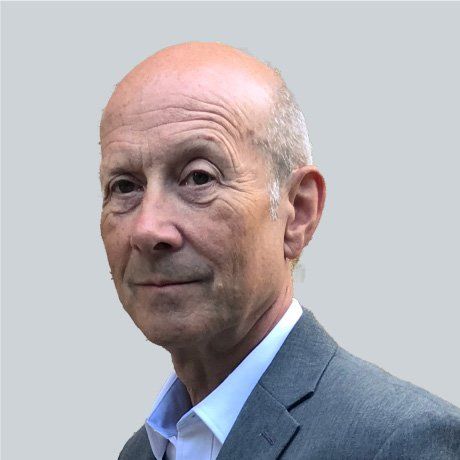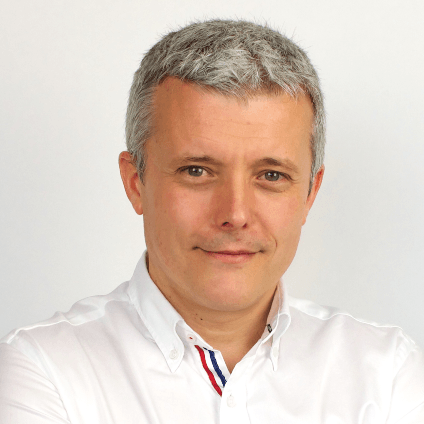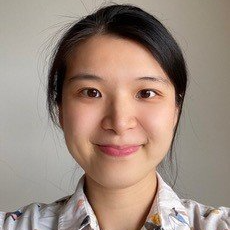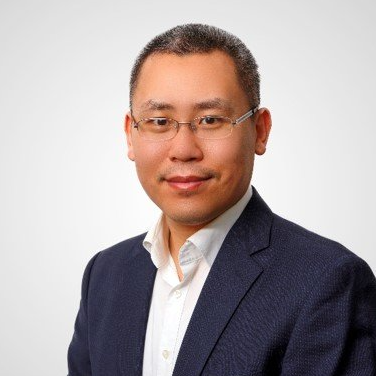Tim Taberner
Technical Sales Director, Advantech Europe
InnoTalks > Industrial IoT insights. Monthly video on-demand
October 2022
The electricity generation and distribution market faces serious challenges in the near future. Demand will rise exponentially, driven by a move away from fossil fuels in property heating & hot water systems, and especially by the move to electric vehicles on both road and rail. It’s widely accepted this increase can’t be met by expanding traditional generation and distribution. New power stations are expensive, take many years to bring into service, and are generally incompatible with environmental targets. At the same time, existing distribution networks don’t have the capacity to cope with the forecast demand.
Increasingly then, the industry is moving to a model based on renewable energy sources coupled to local generation to ease pressure on transmission systems. But this brings new challenges. If generation shifts from a small number of very high capacity stations, to a larger number of smaller, more geographically distributed sites, how can they be managed to balance demand and control voltage and frequency levels?
This question is compounded by the diverse nature of renewable energy technologies and operators, where each operator uses different solutions. Also, solar sites only generate power during daylight hours, and capacity varies seasonally with the number of daylight hours and the strength of the sunlight. Wind power only works when there is wind, and again its capacity isn’t fixed. This variability of generation capacity is a property of most renewable energy sources.
So how does a utility work with these diverse energy sources to maintain base load and react to demand surges? The answer lies in an emerging class of software known as a Distributed Energy Resource Management System (DERMS). These systems monitor, control and aggregate power taken from varied and geographically distributed sources, combining their feeds into what is essentially a virtual power station, effectively giving power utilities a single knob to increase or decrease supply as required.
In this Innotalks we host two partners working in this market who can help unpack these challenges and how DERMS addresses them.
[Host] - Hi, and welcome to this latest session in our InnoTalks series. The electricity generation and distribution market faces serious challenges in the near future. Demand will rise exponentially, driven by a move away from fossil fuels in property heating, and hot water systems, and especially by the move to electric vehicles on, both, road and rail.
It's widely accepted that this increase can't be met by simply expanding the traditional generation and distribution. New power stations are expensive, take many years to bring into service, and are not generally compatible with reducing emissions targets. At the same time, existing distribution networks don't have the capacity to cope with the forecast demand.
Increasingly then, the industry is moving to a model based on renewable energy sources coupled to local generation to ease pressure on transmission systems. But this brings new challenges. If generation shifts from a small number of very high capacity stations to a larger number of smaller, more geographically distributed sites, how can they be managed to balance demand, and control voltage, and frequency levels.
The question's compounded by the diverse nature of renewable energy technologies. Solar sites only generate power during daylight hours, and capacity varies with the amount of sunlight. Wind power only works when there's wind. And again, its capacity isn't fixed. This variability of generation capacity is a property of most renewable energy sources.
So how does a utility work with these diverse systems to maintain base load and react to demand surges. Well, an answer lies in an emerging class of software known as a distributed energy resource management system or DERMS, for short.
These systems monitor, control, and aggregate power taken from varied and geographically distributed sources, combining their feeds into, essentially, what is a virtual power station. Effectively giving power utilities a single knob, which increases or decreases supply as required.
I'm joined today by two partners working in this market, who can help unpack the challenges and how DERMS addresses them. Jaime Gonzalez, is a solutions architect at Pentasoft, who specialize in bringing cloud based, AI-led solutions into a variety of industries, including DERMS. And by Joyce Bai, who's the sales manager at thingnario, who operate and maintain the DERMS platform that's been used by the Taiwan Power Company since 2019. Also joining us is the Advantech Europe, product sales manager responsible for a number of the products used by Pentasoft, and thingnario, in their solutions, Daniel Sun. Welcome, everyone.
The mega trend in distributed energy resources management (DERMS) for energy efficiency
[Host] - Daniel, I've given a brief overview of what DERMS is and why it's an increasingly important technology for future utility operations. But perhaps, you could give us a bit more detail about the actual implementation scenarios, and the difficulties that arise.
[Daniel, Advantech] - The distributed energy generation market size was valued at $263.5 billion in 2020, and is expected to grow at a combined annual growth rate of 10.6% for the forecast period ending 2027. Reaching a market value of $532.3 billion.
We're also hearing now about REPowerEU, where the EU needs to become independent from Russian gas and oil, as soon as possible. And they see solar as a big part of this migration. Solar is set to deploy over 30 gigawatts, including 1.5 million solar rooftops by end of 2022. With the right frameworks in place, 1 terawatts of solar capacity is within reach for Europe by 2030.
What are the challenges in distributed energy resources management (DERMS) markets?
[Host] - So I get that it's a huge growth market but what are the technology challenges for DERMS?
[Daniel, Advantech] - Gartner talk about 4D forces of decarbonized, decentralized, digitized, and democratized power imposing structure change in energy provisioning. The energy transmission and distribution fundamentally changes from the traditional energy delivery network architecture.
It needs to connect with generation, distributed energy storage, and nodes like EV charging station, or industry and commercial customers. The centralized architecture will need fast communication, and a computing in the field to help to monitor status changes in each node, and to make the right decision in real time. All of these new challenges are driving new technologies into this sector.
[Host] - And what's Advantech's role in this trend?
[Daniel, Advantech] - Well, we already have a successful business in transmission and distribution with tier one system integrators worldwide. Now it's time for us to empower renewable energy, energy storage solutions, and the end transport infrastructure.
So our products, and our solutions are not only focuses on power automation but on the whole smart grid application, with Advantech comprehensive IoT solutions, and the products. For example, this is currently the largest single project operation with 3.2 million solar panels in Abu Dhabi. The whole data collection and IPC for the customer's data are based on Advantech solution.
How to manage the distributed energy resources through cloud service and Edgelink platform?
[Host] - Jaime, before we get into the detail on DERMS, perhaps you could tell us a bit about Pentasoft's background.
[Jaime, Pentasoft] - Sure, Tim. Pentasoft is a software development company with more than 10 years of experience in the design and implementation of software as a service solutions on AWS. We have more than 300 customers worldwide. And our solutions are secure, reliable, and offer a very affordable and flexible pay-as-you-go pricing.
[Host] - When we look at DERMS architectures, one of the big differences, compared to other systems, is just the scale and diversity of the remote site and device characteristics. How does Pentasoft help overcome this?
[Jaime, Pentasoft] - Well, in IoT projects across pretty much all industries, the market has come to realize that the most successful model is to bring together a coalition of experts to solve a problem. In this case, Advantech has great edge gateways equipped with a powerful EdgeLink software platform, which handles interface to all of the different types of device protocols in the DERMS market.
We also have the DERMS software providers that implement are great at all
of the algorithms that allow network load to be balanced, and frequency and voltage to be kept within tolerances and so on. Our expertise at Pentasoft is in the glue which holds these two ends of the story together, Advantech gateways and DERMS software. This is the goal of Neuron, our software as a service solution for industrial IoT sensor monitoring, data acquisition, and platform management.
[Host] - OK. So what exactly is Neuron doing?
[Jaime, Pentasoft] - Well, when we talk about the DERMS system, the software gets data from thousands, potentially tens of thousands of remote devices. This complex process has to be managed, and the devices themselves need to be monitored, managed, maintained centrally. This is not the focus of the DERMS software companies.
Do you really want to interface by an API to validate the data lake and not have to worry about the details of how the data gets there, or how to monitor the state of remote devices ingesting that data. This is the part we provide. Users, simply connect the inverter or wherever are the devices, to an Advantech gateway equipped with EdgeLink and then just configure Neuron's IoT endpoints and security. And that's all.
Neuron provides complete management, including secure, fine-grained access, asset modeling, data transformation, and a whole set of tools based on AWS to implement any additional functionality. Of course, we provide this value across a whole range of industries.
But it is especially valuable in the DERMS case because of, both, the high number of remote sites in a typical system, and also because the generation sites are typically owned and built by different users. So there is a very high level of diversity of site configurations, and equipment that has to be integrated.
How to drive the AIoT technology into energy solution and realize in the energy plant?
[Host] - Thanks, Jaime. You mentioned that the Pentasoft solution sits in between the field gateways, and the DERMS application. And I'd like to turn now to the DERMS application itself, and how it can help users. This is where thingnario fit in. So Joyce, perhaps you could start by giving us a brief introduction to the company.
[Joyce, thingnario]- Oh, of course. Thanks for the opportunity to introduce thingnario and our AIoT solution, which is a SaaS platform focused on the renewable energy sector. We will come on to discuss specifics but we offer not only just a monitoring and control package, we make extensive use of AI to help operators. In fact, more than 50% of our staff are software engineers and AI talents. The whole team has decades experience in IT and AI solution.
Here you can see, thingnario has a top market share for PV monitoring in Taiwan, also operate in a number of other countries. As you can see from these figures, we have a high rate of clients renewing with us each year, which together with new clients being added means, both, our total contract value and the annual recurring revenue performance is showing three digit growth. This demonstrates a high level of benefit we bring to our client's business.
As I say before, our clients are not just in Taiwan. We provide solutions in more than 10 countries. And remember that this growth figures have been achieved during the period of COVID pandemic, when the international travel was really limited.
[Host] - That's an impressive growth record. Why do you think you've been so successful?
[Joyce, thingnario] - Right. Actually, a lot of success is to do with our platform use AI to inform clients of issues before they got really a big problems. Means that they can take a preventative maintenance measures to maximize their output. And we look at other aspects, not just the inverter performance but also a shading, dirty module, fuse problems, and so on.
And all of this factor can negatively affect the power generation but they are very, very difficult for human operators to spot out until they become a serious problem. And the AI alarms help investor to save money and OEM team can be managed more efficiently.
In fact, our platform extends beyond this operational benefit to provide a single place that stakeholders can go to for a variety of reports, so that they can manage their assets investment much well, because we pull all the data from a variety of places, not just a live gateways but also offline database and other online sources. And we can provide tailor made reports for investors, financial consultant, and so on.
[Host] - So what kind of return do customers see if they use the platform?
[Joyce, thingnario] - Oh, I'm glad you asked. Because you can see the number really tell the story. Based on the feedback from customers using our platform, we help clients to save 50% on downtime. And which contributes to a reduction in production losses is around 72%. And you can see from-- that's why our clients keeping using our platform, and they introduce new businesses to us.
[Host] - So tell me a bit more about how it works.
[Joyce, thingnario] - OK. If we will look at the bigger picture of before AIoT solution, as you can see from this slide, [INAUDIBLE] there are multiple energy resources such as wind, biomass, and solar. These add up to thousands of devices. It means billions of data coming in.
And we ingest all of this information, and filter, and analyze to get the critical, actionable information for users. And, of course, a large part of how we do this is down to the real world expertise to train the AI modules.
OK. If we were looking into more deeply the on site structure, we can see, for example, there are many, many devices in the solar farms, such as HV, MV, and AC stations, inverters, combiner box and so on. thingnario [INAUDIBLE] is able to get the data from this diverse range of devices, and send it to the cloud to be used in our AI process. And all of this information is available for users at any time in any place, as long as they have a connectivity to the cloud.
Let's look at the real case. Here's our monitoring box. There are some differences between solar farms and solar rooftop. But basically, the monitoring box includes a UPS, a meter had to convert their analog to digital signal. And thingnario, [INAUDIBLE] by Advantech, which is from its ECU series. It has two LAN ports, four mobile spots, and also be able to be expanded with 4G module for the internet connection.
thingnario has integrated multiple inverters, sensor meters, power meters, and I/O devices. So you can simply plug and play to connect to the size of devices. Every single day, all of the sites generate a great amount of data volume managed by thingnario platform.
thingnario provides OEM technicians, financial operators, investors with all the data and information they need. Users can easily use thingnario mobile app to monitor all the projects they are responsible for.
And client can easily get the AI alarms to prepare maintenance in advance, in order to prevent the possible losses. All the alarms, and root causes are listed clearly with a possible loss diagnosis. And all investment can be monitored and managed efficiently by users.
[Host] - That's been really interesting. So if you had to give the audience just the key takeaway points, what would they be?
[Joyce, thingnario] - OK. Here are some takeaways for today's audience. First, we know that due to the unstable nature of renewable energy, we need to have the stable platform to ensure your investment can be good return.
Second, we can take the latest technology, which is AI to find out the problem earlier. Last but not least, to apply the AI well, it's really crucial to have a robust and reliable AIOT devices, and partners to work together.
Optimize and boost energy efficiency with data collection, protocol integration & edge computing technologies
[Host] - Thanks, Joyce. Looking at this real case of power plants in Taiwan using Advantech's technologies, Daniel, are there other technologies built into Advantech solutions that help boost the operator efficiency?
[Daniel, Advantech] - Yes, Tim. Operating and maintenance is a very important topic for the facility, especially, for the utility company. There is usually an unmanned and automated environment. So a ruggedized system is always the first priority. And how we can do the remote monitoring and the management over the air is quite important.
In the field of the environment, and the facilities monitoring, in particular, there are three major aspects that value digital operation and maintenance most, safety, instant response, and efficient management.
Advantech have comprehensive products and solutions like Edge gateways, industrial cellular routers, industrial ethernet switches, high end industry servers, and SCADA systems to help our customers to build DERMS.
As you know, the market EV car is growing. And the vehicle to great technology market can bring more opportunities for us, like data collection, wireless communication, and data virtualization. Advantech 5G, and AI technology can empower our customer's solution.
[Host] - Thanks, Daniel. I'd like to thank Daniel, Jaime, and Joyce for sharing their experiences and insight today. As I mentioned, right at the start, the electricity generation and distribution industry is entering a time of great change. This also means a time of, both, great challenges and great opportunity.
The trend away from massive centralized generation to a distributed model, based upon thousands of microgeneration sites, coupled to the move from long distance distribution towards more localized storage solutions is driving the need for the distributed energy resource management systems we've been discussing today. And with it is also driving demand for intelligent edge computing solutions, and wide area network and communications.
I hope today, you've gained a better understanding of some of the challenges this raises, and also the solutions that Advantech and its partners are bringing to address them. If you'd like to find out more or if you want to talk about our solutions for other industries and applications, then please get in touch using the details on the screen. Thank you for joining us today. And until next time, goodbye.

Tim Taberner
Technical Sales Director, Advantech Europe

Jaime González
Solutions Architect,
Pentasoft

Joyce Bai
Sales Manager,
thingnario ltd.

Daniel Sun
Product Sales Manager,
Advantech Europe